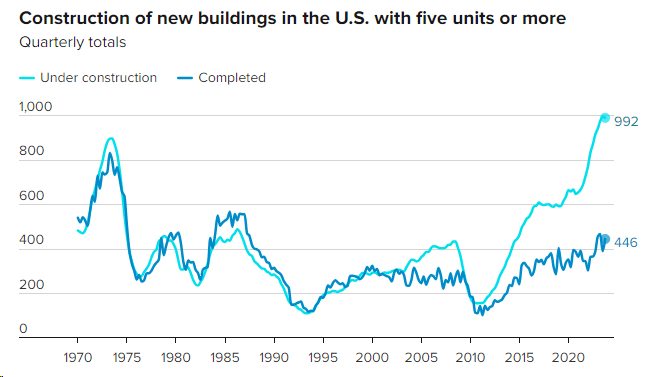Examining Trump's Aggressive Stance On European Trade Deals

Table of Contents
Tariffs and Trade Wars: The Core of Trump's Approach
Trump's "America First" approach prioritized protectionist measures, using tariffs as a primary tool. This section analyzes the imposition of tariffs, the justifications provided, and the resulting retaliatory measures from the EU.
Steel and Aluminum Tariffs
The Trump administration imposed tariffs on steel and aluminum imports, citing national security concerns. These actions, however, were widely viewed as protectionist measures aimed at bolstering domestic industries.
- Specific tariff percentages: 25% on steel, 10% on aluminum.
- Affected industries: Steel and aluminum producers in the EU and globally experienced significant impacts. Automakers, construction firms, and numerous other sectors reliant on these materials faced increased costs.
- EU counter-tariffs: The EU responded with retaliatory tariffs on various US goods, including motorcycles, bourbon, and denim.
The economic impact was substantial. While some US steel and aluminum producers benefited, the tariffs led to job losses in industries reliant on imported steel and aluminum, along with price increases for consumers. The EU also suffered economically, with reduced exports and increased costs for its industries. This tit-for-tat tariff exchange exemplified the escalating nature of Trump's trade policy and its damaging effect on global trade.
Challenges to the WTO
Trump's administration openly criticized the World Trade Organization (WTO), viewing it as an unfair system that disadvantaged the US. This led to actions that undermined the WTO's authority and dispute settlement mechanisms.
- Examples of challenges: Blocking appointments to the WTO's appellate body, leading to its paralysis; frequent criticism of WTO rulings unfavorable to the US.
- Impact on international trade governance: The weakening of the WTO significantly impacted the global trade system, as it reduced the ability to resolve trade disputes effectively.
Trump's actions weakened the WTO's ability to enforce rules and settle disputes, thereby threatening the stability of the international trading system. This also affected the EU's position within the WTO, making it harder to effectively advocate for its interests in a system increasingly characterized by unilateral actions.
Renegotiation of Existing Trade Agreements
Trump's administration sought to renegotiate existing trade agreements, reflecting a broader strategy of bilateralism and protectionism. This section analyzes the impact of these renegotiations on the EU, both directly and indirectly.
NAFTA and its replacement, USMCA
The renegotiation of the North American Free Trade Agreement (NAFTA) into the United States-Mexico-Canada Agreement (USMCA) set a precedent for Trump's approach to trade deals. While not directly involving the EU, it signaled a shift towards bilateral agreements and a more protectionist stance.
- Key changes in USMCA: Increased protection for intellectual property, stricter rules of origin for automobiles, and limitations on dispute settlement mechanisms.
- Impact on transatlantic trade: The USMCA signaled a potential shift away from multilateral agreements, which indirectly impacted the EU's trade ambitions. The precedent set by this renegotiation made future trade negotiations with the US more challenging.
The creation of a more protectionist North American trade bloc raised concerns among European businesses about the future of transatlantic trade and the potential for similar renegotiations targeting existing EU agreements.
Threats to the Transatlantic Trade and Investment Partnership (TTIP)
The Transatlantic Trade and Investment Partnership (TTIP), a proposed trade agreement between the US and the EU, was effectively abandoned during the Trump administration.
- Key sticking points in negotiations: Concerns about regulatory differences, investor-state dispute settlement (ISDS), and agricultural trade.
- Public opposition: Significant public opposition in both the US and EU, fueled by concerns about potential job losses and environmental impacts, contributed to the agreement's demise.
- Impact of Trump's rhetoric: Trump's protectionist rhetoric and opposition to trade agreements further undermined support for TTIP.
The failure to reach an agreement on TTIP represented a significant missed opportunity for economic integration between the US and EU. This failure highlights the extent to which Trump’s policies disrupted established trade diplomacy and the potential for improved transatlantic relations.
Impact on Transatlantic Relations
Trump's aggressive trade policies significantly strained US-EU relations, impacting both political ties and global alliances.
Strained Political Ties
Trump's trade actions and rhetoric led to a noticeable deterioration in US-EU relations.
- Examples of diplomatic tensions: Imposition of tariffs, threats of further protectionist measures, and public criticism of EU policies.
- Impact on joint initiatives: Cooperation on various international issues, including climate change and security, was hampered by the strained relationship.
The strained relationship went beyond simple trade disputes; it affected overall geopolitical cooperation, highlighting the interconnectedness of trade and broader political relations.
Shifting Global Alliances
In response to Trump's protectionist policies, the EU sought to strengthen its ties with other global partners and pursue independent trade deals.
- Examples of new trade agreements: The EU intensified negotiations with countries in Asia, Latin America, and Africa to diversify its trade relationships and reduce reliance on the US market.
- Strengthened relationships: The EU strengthened its partnerships with countries sharing similar values on multilateralism and free trade, leading to deeper collaboration in various areas.
Trump’s trade policies inadvertently accelerated the EU's pursuit of greater economic autonomy, fostering the development of more independent trade relationships and influencing the long-term balance of global power.
Conclusion
Trump's aggressive stance on European trade deals, characterized by the imposition of tariffs, renegotiation of agreements, and challenges to international institutions, significantly strained transatlantic relations and had far-reaching economic and political consequences. His protectionist approach, exemplified by the steel and aluminum tariffs and the demise of TTIP, disrupted established trade norms and negatively impacted global trade governance. Understanding the lasting impact of Trump's approach to European trade deals remains essential for navigating the future of transatlantic economic ties. Further research into Trump's European trade policy is crucial for understanding the complexities of international trade relations and the lasting effects of protectionist measures. Analyzing the long-term effects of these policies on global trade and political alliances continues to be vital for policymakers and researchers alike.

Featured Posts
-
 South Floridas Ferrari Challenge A Racing Event Not To Miss
May 25, 2025
South Floridas Ferrari Challenge A Racing Event Not To Miss
May 25, 2025 -
 Crystal Palace Eyeing Kyle Walker Peters On A Free Transfer
May 25, 2025
Crystal Palace Eyeing Kyle Walker Peters On A Free Transfer
May 25, 2025 -
 18 Brazilian Nationals Charged Major Gun Trafficking Bust In Massachusetts
May 25, 2025
18 Brazilian Nationals Charged Major Gun Trafficking Bust In Massachusetts
May 25, 2025 -
 Uk Inflation Slows Boe Rate Cut Expectations Diminish Pound Rises
May 25, 2025
Uk Inflation Slows Boe Rate Cut Expectations Diminish Pound Rises
May 25, 2025 -
 Real Madrid De Sok Arda Gueler Ve Takim Arkadaslarina Uefa Sorusturmasi
May 25, 2025
Real Madrid De Sok Arda Gueler Ve Takim Arkadaslarina Uefa Sorusturmasi
May 25, 2025
Latest Posts
-
 Analyzing Armando Iannuccis Comedy Techniques A Review By Roland White
May 25, 2025
Analyzing Armando Iannuccis Comedy Techniques A Review By Roland White
May 25, 2025 -
 Imagine The Academy Of Armando Roland Whites Analysis Of Bbc 1s Comedy Show
May 25, 2025
Imagine The Academy Of Armando Roland Whites Analysis Of Bbc 1s Comedy Show
May 25, 2025 -
 David Hockneys A Bigger Picture An In Depth Look At His Landscape Paintings
May 25, 2025
David Hockneys A Bigger Picture An In Depth Look At His Landscape Paintings
May 25, 2025 -
 Bbc 1s Imagine The Academy Of Armando A Comedy Writing Critique By Roland White
May 25, 2025
Bbc 1s Imagine The Academy Of Armando A Comedy Writing Critique By Roland White
May 25, 2025 -
 Kazuo Ishiguro How Memory Shapes Identity And Imagination
May 25, 2025
Kazuo Ishiguro How Memory Shapes Identity And Imagination
May 25, 2025
